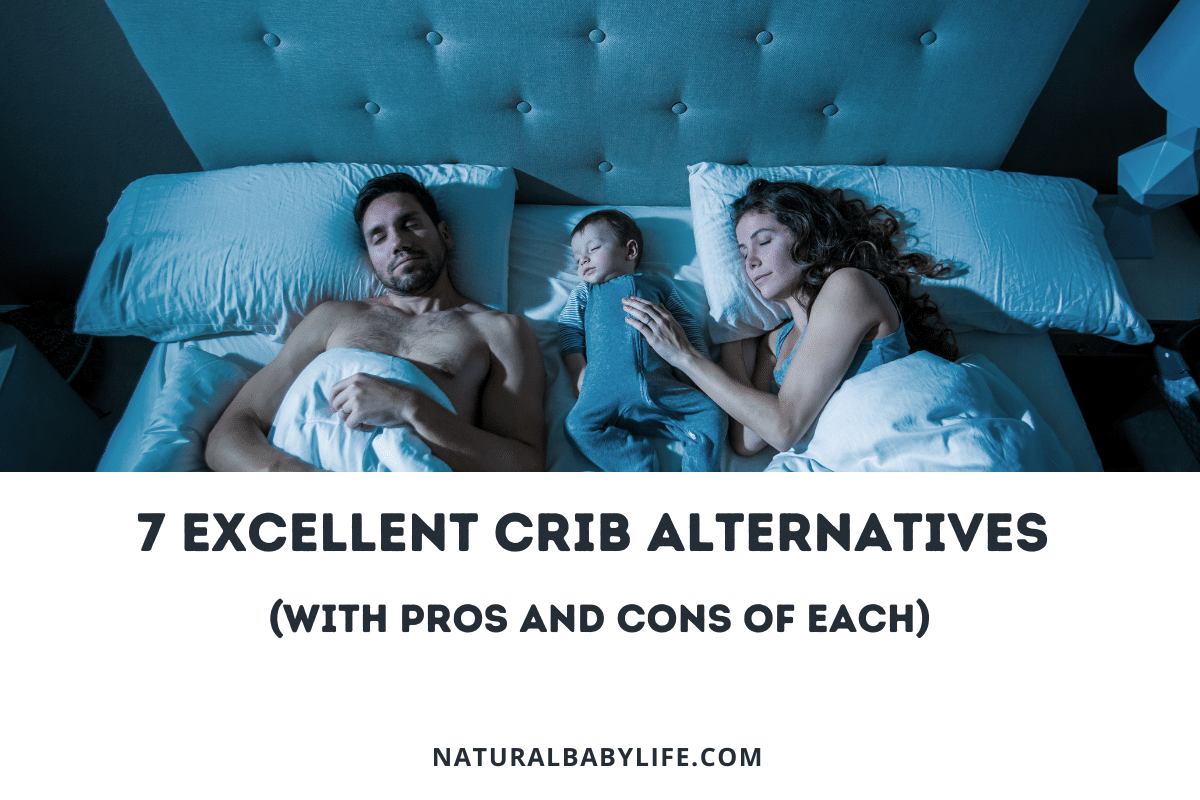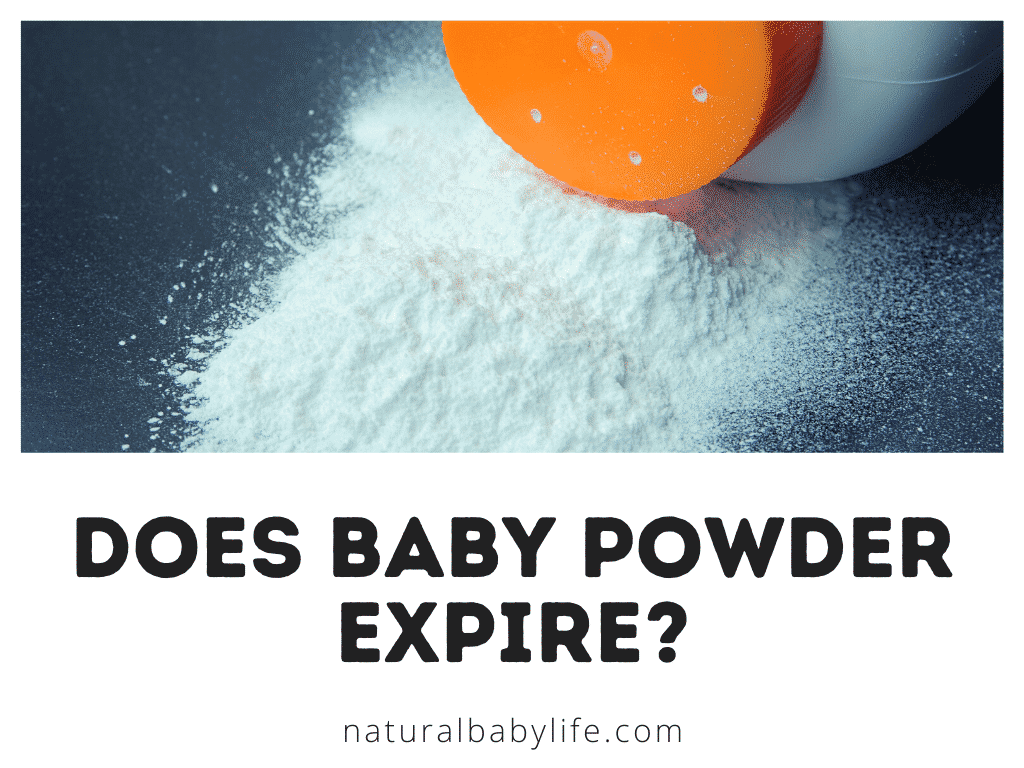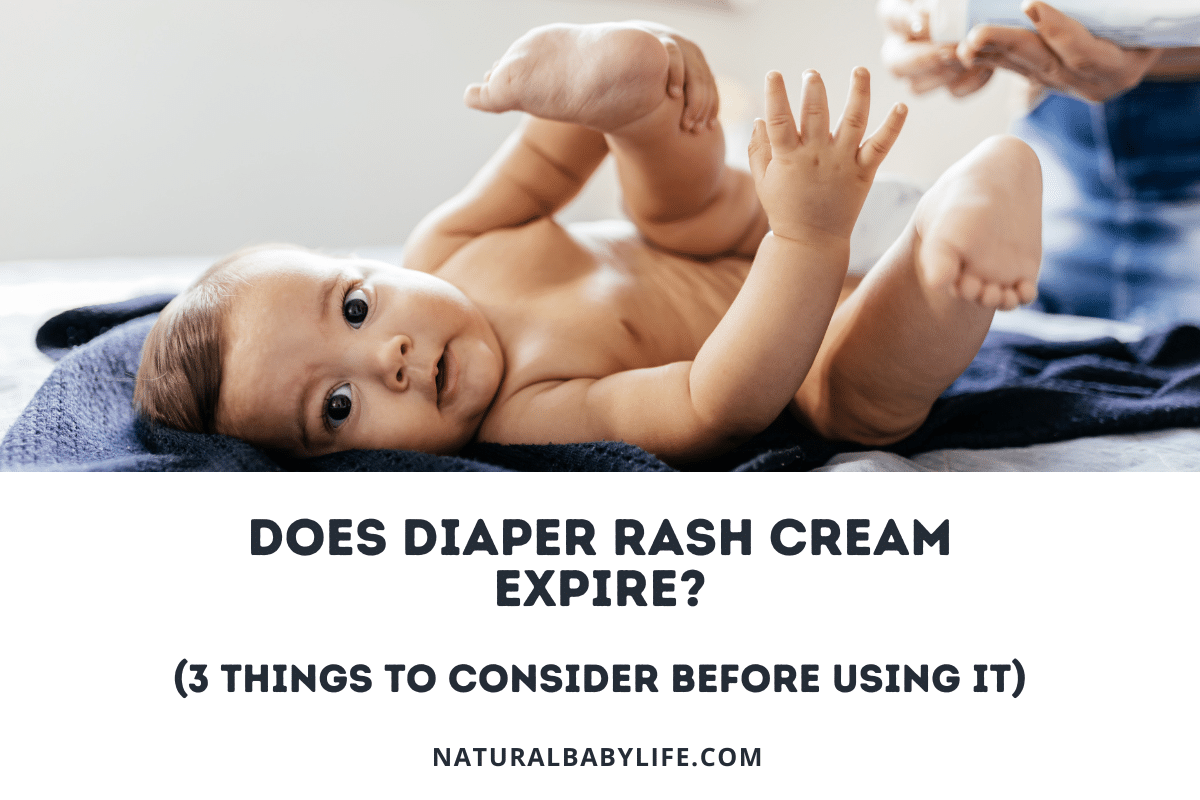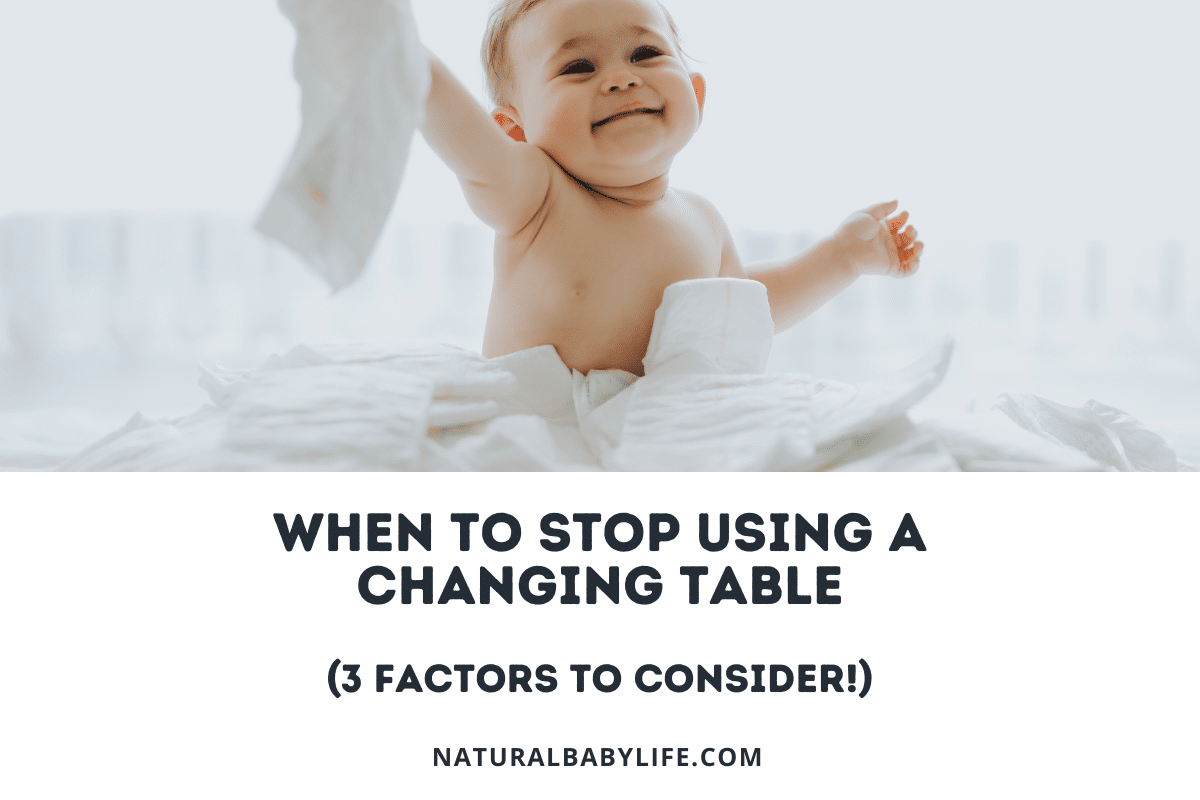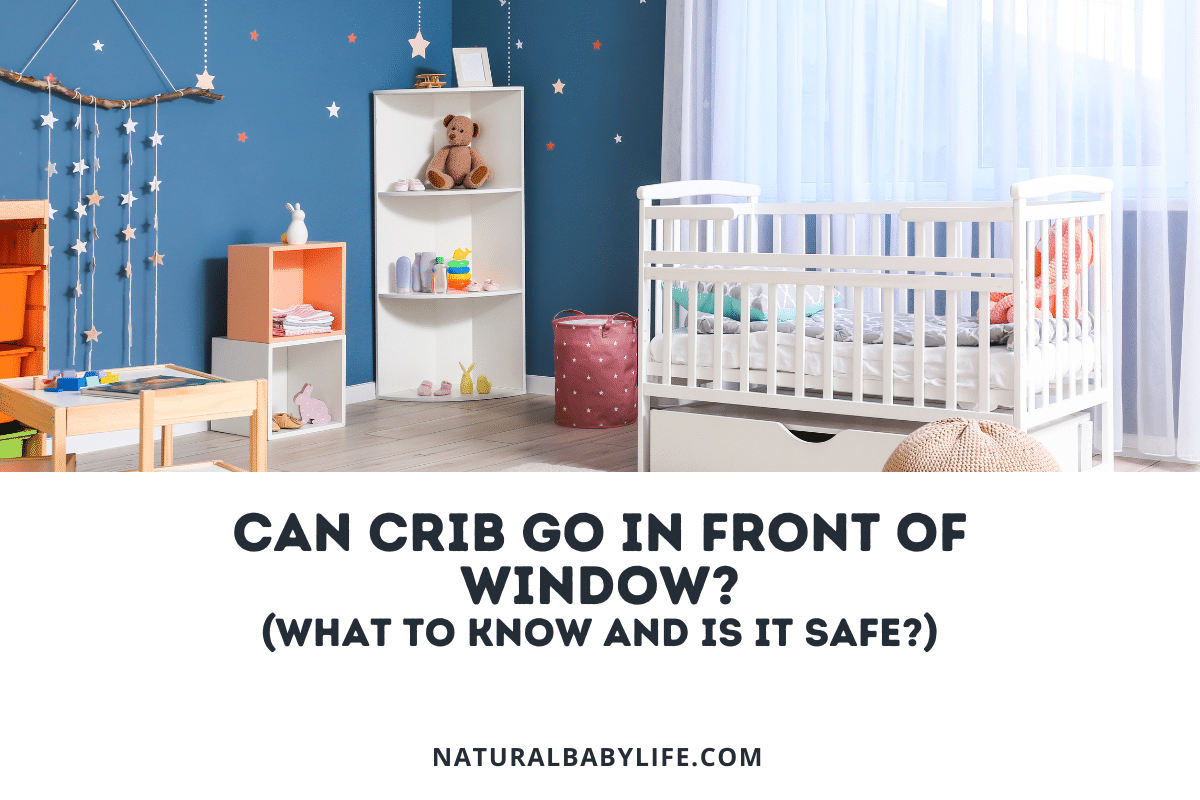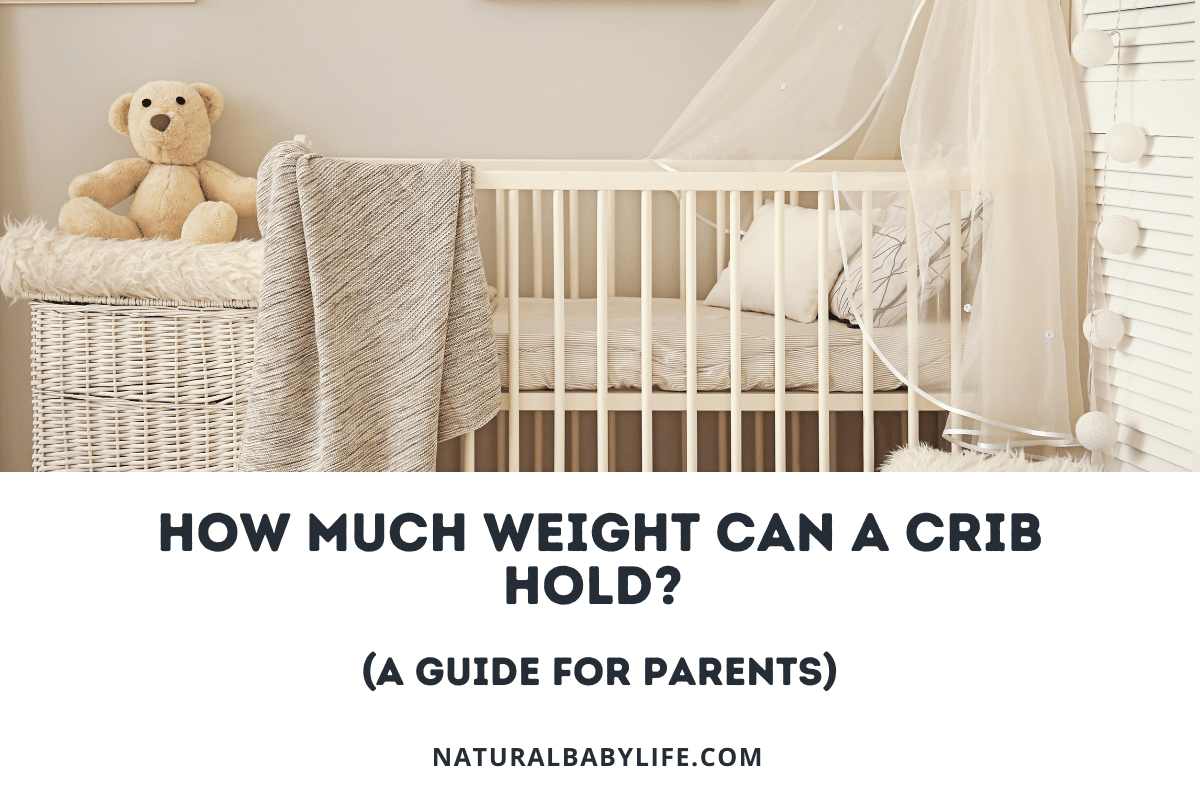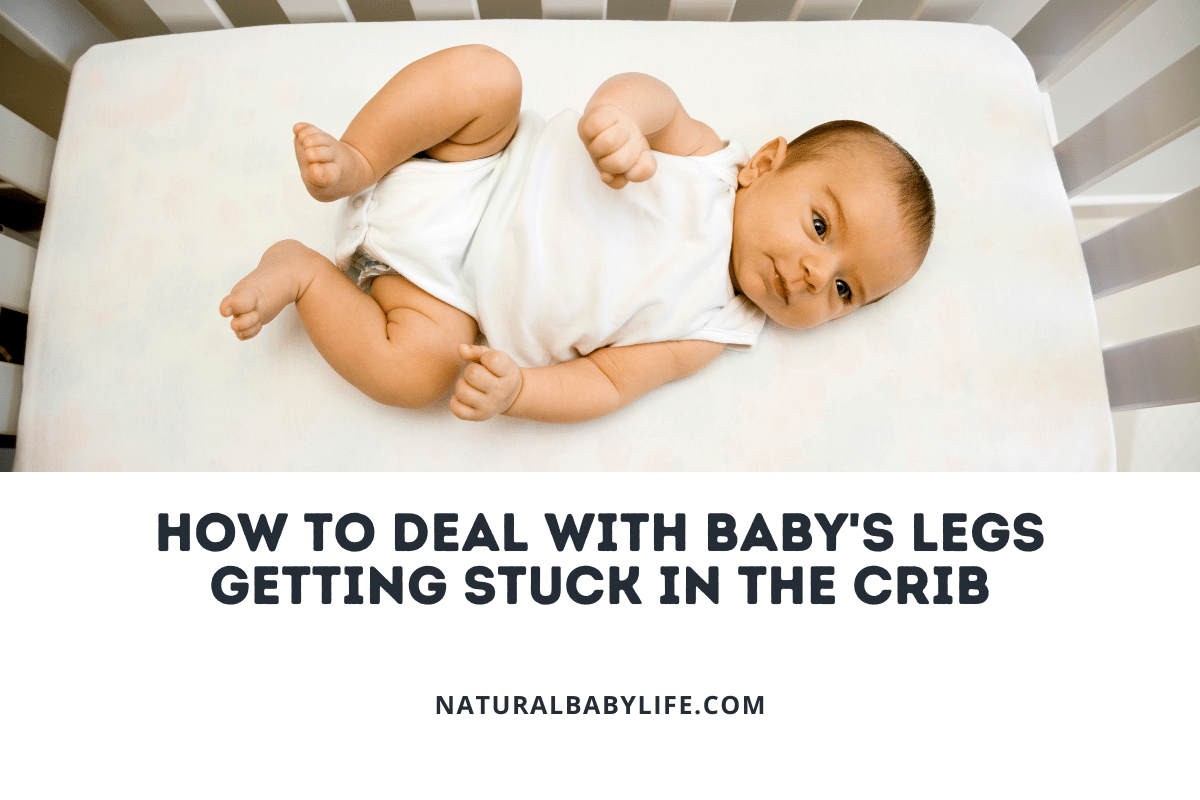Parents who are interested in skipping the crib altogether or just want to try something different with their baby should know that there are plenty of crib alternatives and substitutes available.
As your baby grows, her needs and safety requirements change. Most parents who skip the crib start with a co-sleeping system and move to bassinets, travel cribs, and floor beds.
Depending on your situation, one of these alternatives might be just what you are looking for at this moment for your baby. If your baby isn’t here yet, that’s okay too! I’ll share my personal story of how we moved from one thing to the next.
Table of Contents
Our story
My wife and I are on our third child and have another one on the way. Along the way, we’ve realized that there isn’t necessarily a one-size-fits-all solution for everyone out there.
Some folks might like to get their babies into a crib in the nursery as quickly as possible and maybe listen to a monitor. Other parents might want to keep the crib in their room.
Perhaps you want the baby closer so you put her in a bassinet by the bed. Still, other parents might skip the crib entirely and bed-share with the baby.
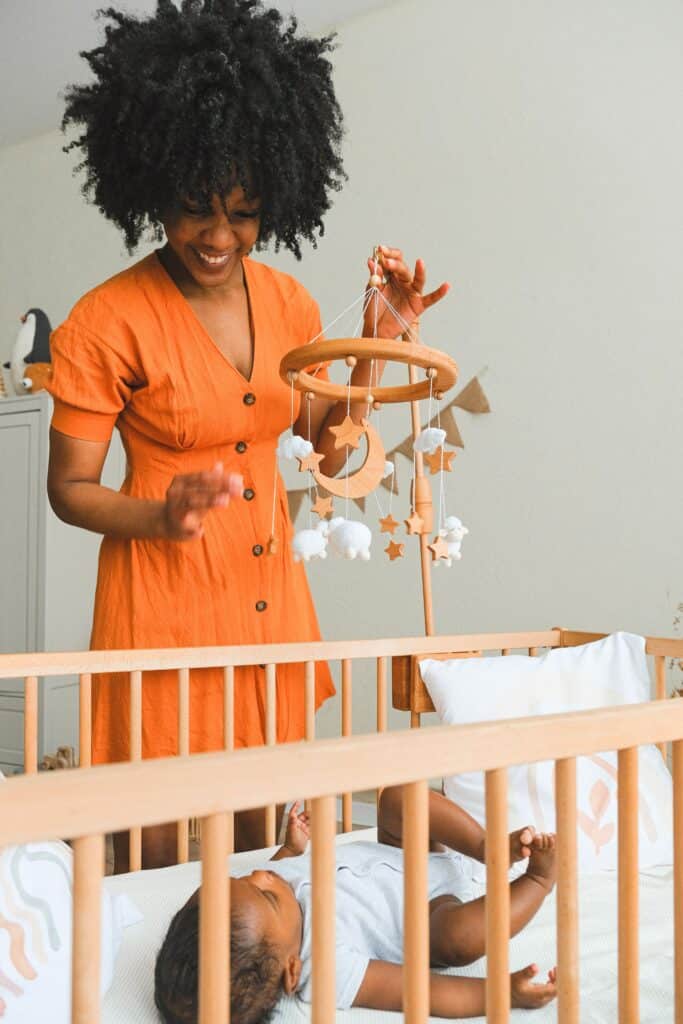
We’ve done it all.
With our first two children (twin girls), we followed a more traditional route. They started out sleeping in a bassinet next to the bed.
Then, we moved them to a regular crib and pack-n-play to sleep in at night (we had to alternate them each night to be fair!) and napped in the cribs as well.
Our son, meanwhile, has been bed-sharing since he was born (he’s now about 18 months old) and we are starting to transition him to floor beds in our room. Eventually, we will transition him to his room on a floor bed or a regular bed.
We had a beautiful crib all ready for him that I painstakingly assembled and painted for him. We didn’t plan on bed-sharing before he was born.
Essentially, we’re skipping the crib completely with him, and we haven’t missed it. We haven’t even used it.
What you choose is ultimately up to you. For breastfeeding moms, however, I will tell you that my wife loved having the baby right there next to her in bed to keep nighttime disruptions to a minimum.
Whatever reason you are looking for a crib alternative, be it saving money, parental preference, or even safety, there are plenty of options for you to choose from.
Remember that you can start with one option and move to others over time as your baby’s needs change!
By the way, I’ve written a whole article on reasons to skip the crib that you can check out here. It goes into much more detail and highlights some of my personal story as well.
Do babies need a crib?
A baby crib is one of the most commonly found items on any baby registry and most people would consider them to be an essential part of a baby’s nursery and sleep arrangement.
Despite the popularity of the traditional baby crib, babies do not need a crib to sleep safely or comfortably.
Many alternatives to the traditional baby crib could be considered safer than a standard crib and many parents could get more value out of a travel crib, pack-and-play, or floor bed because they can be transported and used on the go.
Of course, there is nothing wrong with having a baby crib and they certainly make a cute addition to the nursery.
With that said, I’ve spoken with many families that felt they had wasted money on a big, expensive crib that their baby never used and eventually outgrew. At the end of the day, you’ll need to make the decision that is right for you!
Let’s check out all of the things you can use instead of a crib!
The best crib alternatives
Here is a list, in no particular order, of some things that you can use instead of a crib to help your baby sleep at night and during naps.
I’ll add my personal experience, pros, and cons of each option as well as a recommendation to get you started on your search!
Floor beds
Instead of worrying over a crib, fancy pack-n-plays, or bed-sharing, you can simply use a floor bed.
This is as simple as it gets!
A floor bed is just a mattress that you put a fitted sheet on for your baby to sleep on.
If you use this system, you will need to be sure that the room your baby is sleeping in is entirely baby-proofed because there won’t be anything stopping them from getting out of bed at night.
Current sleep recommendations mean that you shouldn’t have any blankets or pillows on the mattress until your baby is older, and you should be sure that the mattress isn’t too thick in case your baby were to roll off.
Be sure there is a soft carpet or a thick rug on the floor underneath the mattress.
- THE ONLY DUAL-SIDED PACK N PLAY MATTRESS TOPPER
- PORTABLE AND VERSATILE | Folds in thirds, making it easy to use at home or on-the-go.
- EXTRA THICK FOR MAX COMFORT
- STAIN-RESISTANT & WATERPROOF
Prices pulled from the Amazon Product Advertising API on:
Product prices and availability are accurate as of the date/time indicated and are subject to change. Any price and availability information displayed on [relevant Amazon Site(s), as applicable] at the time of purchase will apply to the purchase of this product.
I would recommend getting a pack-n-play insert mattress like the one pictured above. These are amazing because you can fold them up and move them out of the way during the day, move them to another room, or even throw them in the car for a trip.
This particular mattress is double-sided to provide the firmness that a newborn needs and the softness that a toddler will love. It also comes with a great zip-on cover that is machine washable, waterproof, stain-resistant, antibacterial, and hypoallergenic.
It’s also super affordable.
I seriously wish that this mattress had been available when we were shopping! Check it out right here (and read some of the awesome reviews on Amazon).
Pros:
- If you have a suitable old mattress, then you won’t have to spend any money
- Can last for many years as your child grows
- Easily moved from one room to another
- Add pillows and bedding once your baby is past the age of SIDS risk.
Cons:
- Baby could roll off the bed – works best for older babies
- The room must be baby-proofed to ensure safety
- Keeping older babies and toddlers in bed could become challenging
Putting a co-sleeper in the bed
A co-sleeper is a much cheaper alternative to a bassinet or crib for allowing your baby to co-sleep and even bed-share with you safely.
Essentially, these are little bassinets that sit directly in the bed and provide a safe sleeping surface for your baby while helping to prevent mom and dad from rolling over onto the baby at the same time.
These are great because you get all the perks of using a bassinet without most drawbacks. Plus, you can easily move a co-sleeper around the house and into different rooms for your baby to sleep.
Heck, you could even move your baby in it while she is sleeping!
- Rigid, vented walls separate baby and adult bedding
- Tall walls are lined with a soft, breathable mesh for ample air circulation
- Includes waterproof foam mattress with a fitted, wraparound sheet.Not for use in cribs and bassinets
- Nightlight & sound unit included
Prices pulled from the Amazon Product Advertising API on:
Product prices and availability are accurate as of the date/time indicated and are subject to change. Any price and availability information displayed on [relevant Amazon Site(s), as applicable] at the time of purchase will apply to the purchase of this product.
This particular co-sleeper checks all of the necessary boxes for safe sleeping and it’s super affordable to boot!
It has a sturdy metal frame, but it only weighs about six pounds so you won’t have to throw your back out to move it around.
The fabric of the mattress is naturally fire-resistant, and the mesh around the sides makes it breathable. Overall, co-sleepers like this are super handy to have around and provide peace of mind while your baby sleeps.
You can check out what other parents think about this product here.
Pros:
- Affordable
- Lightweight
- Easy to move around the bed or house
- Allows safer bed-sharing
Cons:
- The included sheets and pad are not waterproof
- Your baby will outgrow it at around six months old
- Takes up space in the bed (probably need a queen or larger)
Travel cribs
These cribs are meant to be easily collapsed and packed up so that you can easily take them wherever you happen to be going.
They are pretty simple and no-frills compared to most cribs or pack-n-plays, but really, you don’t have to complicate things too much to get your baby a good night’s sleep!
The best thing about travel cribs is that they are super lightweight, easy to carry, and usually fit inside a backpack or small carrying case.
Since babies can be very temperamental about sleeping in new places, it is also fantastic to be able to keep her with the same bedtime routine in a bed that she feels comfortable and safe inside.
- WORRY-FREE AIRPORT TRAVEL
- CERTIFIED SAFE & NON-TOXIC
- QUIET SIDE ZIPPER DOOR
- COMFORTABLE MATTRESS
- WHAT’S INCLUDED - You get a complete travel crib with the compact backpack carrying case. Two Year Warranty and great customer service
Prices pulled from the Amazon Product Advertising API on:
Product prices and availability are accurate as of the date/time indicated and are subject to change. Any price and availability information displayed on [relevant Amazon Site(s), as applicable] at the time of purchase will apply to the purchase of this product.
Although I haven’t personally used this particular model, it checks all of the boxes that I would love to have in something that I buy for my baby. Most importantly, it is GreenGuard Gold certified, which means it has no lead, phthalates, PVC, heavy metals, or other toxins. I believe this might be the only play yard that I’ve seen with this certification. It is also a zippered side, a mattress approved for overnight sleep, it’s lightweight, and it fits into a handy backpack. The only real downside is that it does not come with sheets. It isn’t cheap, but you will also get what you pay for, and you’ll be able to use it for many years as your baby grows.
Check out this travel crib right here (and see the highly-rated reviews from other parents like you on Amazon!)
Pros:
- Can last for years
- Portable and easy to use while traveling
- Easy to move around the house or even bring outside
- GreenGuard Gold certification
Cons:
- Not cheap (but still less expensive than most cribs)
- Doesn’t come with sheets or a mattress cover (available separately)
Pack and plays
Your standard pack-and-play is similar to a travel crib in that they are meant to collapse and move around pretty easily. They usually trade some of the portability and convenience of a travel crib, however, for a few more features and a sturdier design.
It’s pretty common to find packs and plays with built-in bassinets, changing tables, storage areas, mobiles, and more.
This makes them great for crib substitutes because they can offer pretty much the same sleep performance as a crib but with more features at a similar or even cheaper price.
You can also break everything down and bring the pack ‘n play to grandma’s house as well. Typically, they will be made with metal frames with fabric material covering it and they will have mess sides for breathability.
- COMPACT FOLD!
- ORGANIZED: Mesh parent organizer keeps diapers, wipes, bottles, rash cream, and all other essentials close at hand and ready for immediate use
- PORTABLE: Ultra-portable design features braked wheels so your baby has a safe place to play anywhere in your house
Prices pulled from the Amazon Product Advertising API on:
Product prices and availability are accurate as of the date/time indicated and are subject to change. Any price and availability information displayed on [relevant Amazon Site(s), as applicable] at the time of purchase will apply to the purchase of this product.
This particular product from Baby Trend is affordable and has just enough features for me without getting too complicated.
It has a built-in bassinet that you can place alongside your bed (if you have space) along with an organizer for your diaper-changing supplies.
If you are done with the bassinet, you can simply remove it to get a full-size bed. The whole thing is on wheels so you can move it around the room easily, but you’ll have to collapse it to move it any serious distance because it’s unlikely to fit through a doorway.
Check out this pack-and-play right here (and see other reviewers’ impressions on Amazon).
Pros:
- Affordable
- Most have a bassinet feature
- Reasonably portable
- Easy to find one with the features you want most
- Standard sizes allow you to use your mattress if desired
- The closest alternative to a traditional crib
Cons:
- Some liners are not removable for cleaning
- Some models are a little difficult to collapse on your own
- Could be too heavy to move around for new mothers
- Mattresses are thin and picky sleepers may be uncomfortable
Bassinets and bedside co-sleepers
I mentioned earlier that co-sleepers are a great alternative to bassinets, but I still want to mention these because they might work well for your situation and I’ve personally used one with my son.
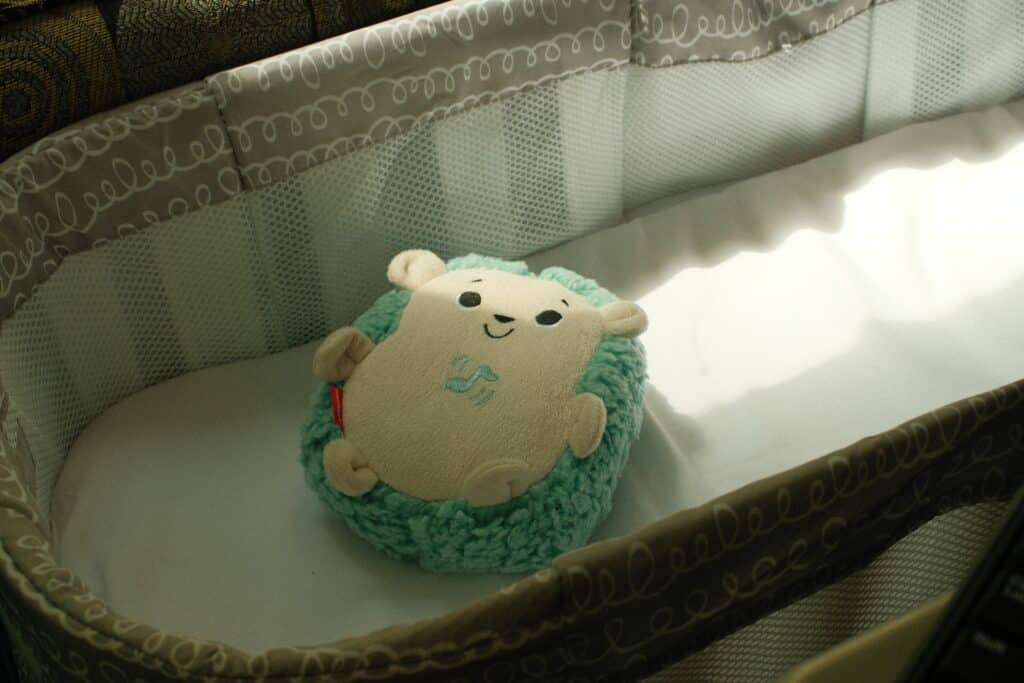
There is a range of styles among bassinets, but most of them are designed with a sturdy (and heavy!) base along with a mesh-sided sleeping area up top.
Most of them are designed to be rolled or moved up close so that the sleeping area hangs over your bed. Many also have a way to lower the side down quickly so that you can get your baby out more easily while lying in bed.
One thing to note about bassinets, in general, is that you shouldn’t use them once your baby is old enough to push up or roll over because it opens the door for them to climb up and out of the sleeping area.
Since bassinets are usually high off of the floor, this is a potentially big concern!
That’s the biggest downside of bassinets, in general. You won’t be able to use them for too long before it’s time to move on to something more age-appropriate. That means you have about six months, at the most!
- Our best-selling HALO BassiNest is the only bassinet with a 360º swivel to keep your newborn close allowing for essential bonding. Also includes a waterproof mattress and one machine-washable fitted sheet.
- Designed with mothers in mind, the patented lowering bedside wall makes it easier to care for baby from bed, especially for breastfeeding and C-section moms.
- Sturdy four-point base provides maximum stability and easily adjusts for bed heights from 22 -
Prices pulled from the Amazon Product Advertising API on:
Product prices and availability are accurate as of the date/time indicated and are subject to change. Any price and availability information displayed on [relevant Amazon Site(s), as applicable] at the time of purchase will apply to the purchase of this product.
I can personally recommend the HALO line of bassinets because we have used one with my son.
The particular one that we got is very similar to the one pictured above and I can tell you that I was surprised at just how sturdy and heavy the base is for the unit.
There is no risk of the bassinet falling over under normal circumstances. It has a swivel that lets you move it over the bed or away, the top bedding is firm, the sides are made from breathable mesh, and the side closest to the bed easily pulls down to grab your baby when needed for nursing.
If you want to check this unit out, you can do so here (and read reviews from other parents on Amazon).
Pros:
- Sturdy construction
- The swiveling top makes it easy to reposition
- Easy to get the baby in and out of the bassinet while in bed
Cons:
- Your baby will grow out of it relatively quickly
- Some models are quite expensive
- Heavy base makes it difficult to move around the house
Bed-sharing
This is the option that my wife and I have used the most with our third child.
Because he was breastfed, letting him stay in bed with us meant that it was incredibly easy for my wife to feed him throughout the night, and she didn’t have to fully wake up and walk across the house to calm a crying baby.
She also felt peace of mind having him in the bed because she could instantly check on him whenever she wanted.
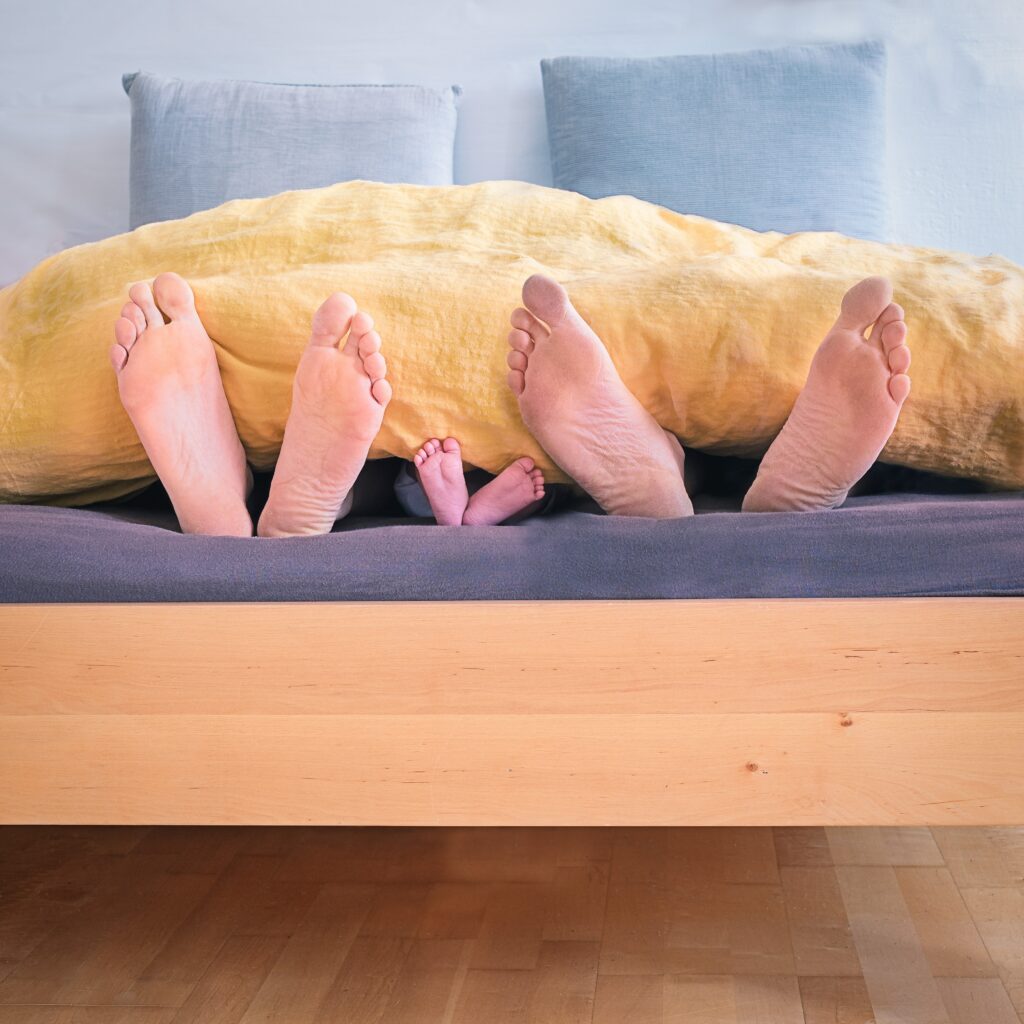
I should point out that even though we had great success with this method, it is not recommended by the AAP because of the potential SIDS risk.
Ideally, newborns sleep on a firm mattress without any blankets or pillows which could increase the possibility of suffocation. Additionally, parents could easily roll over onto their children and smother them.
In our particular case, my wife is an extremely light sleeper and we both rarely move much while we sleep. She was able to comfortably position our son in between us without any blankets or pillows nearby.
With that being said, the safest option for bed-sharing is really to use the co-sleeper that I mentioned above to minimize the safety risk as much as possible!
Pros:
- Nothing to buy
- Instant feedback from your newborn when it comes to feeding
- Peace of mind for some mothers
Cons:
- Potential safety hazard
- Takes up space in bed (need a queen-size or larger)
Essentially, we’re skipping the crib completely with him, and we haven’t missed it.
Cardboard box
Okay, I added this one for a little bit of a laugh, but this is a serious option!
In Finland, it is quite common for hospitals to send new parents and babies home with what they call a ‘maternity package’ which is provided by the government.
The package includes things like shampoo, lotion, clothes, diapers, wipes, and other essentials to use for your baby. All of those items are then loaded into a sturdy cardboard box with a small mattress in the bottom that can work as a little crib or bassinet.
It’s a pretty cool tradition that dates back to the 1930s and is meant to ensure that all babies get an equal, safe start in life regardless of their financial situation.
The boxes were also tied to receiving the care of a doctor and, combined, helped drastically reduce the infant mortality rate in Finland over the years.
But, most importantly, this really highlights that babies don’t have to have fancy furniture and supplies, so don’t beat yourself up if you’re not a Pinterest mom in an aesthetic home.
Conclusion
Cribs are a default sleep option, but there are many great sleep options for babies. Find the right fit for your baby and your family to help mom and baby have a comfortable, safe postpartum experience.

